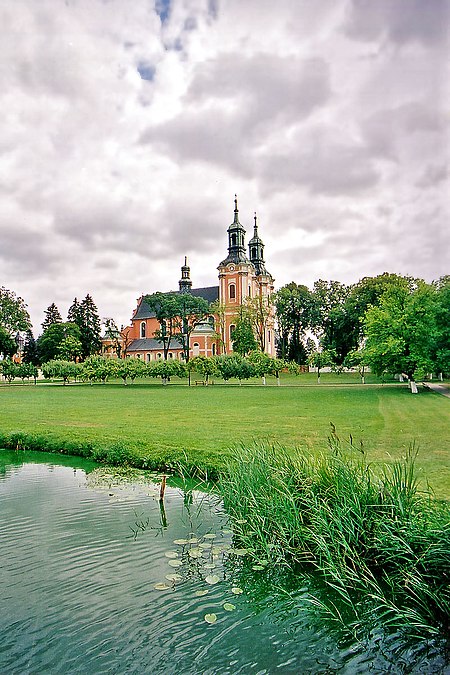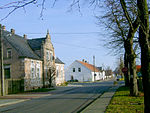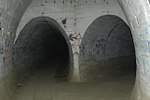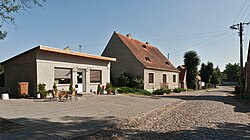Gościkowo
Pages with Polish IPAVillages in Świebodzin CountyŚwiebodzin County geography stubs

Gościkowo (Polish: [ɡɔɕt͡ɕiˈkɔvɔ]), formerly Paradyż, formerly German: Paradies) is a village in the administrative district of Gmina Świebodzin, within Świebodzin County, Lubusz Voivodeship, in western Poland. It lies approximately 10 kilometres (6 mi) north of Świebodzin, 44 km (27 mi) north of Zielona Góra, and 49 km (30 mi) south-east of Gorzów Wielkopolski. In the 13th century, the village was known as Gościchowo which is the source of the modern name. In 1230 Mikołaj Bronisz (Wieniawa) granted the area to the Cistercians who gave it the Latin name Paradius Matris Dei, from which Paradies and Paradyż were derived.
Excerpt from the Wikipedia article Gościkowo (License: CC BY-SA 3.0, Authors, Images).Gościkowo
gmina Świebodzin
Geographical coordinates (GPS) Address Nearby Places Show on map
Geographical coordinates (GPS)
| Latitude | Longitude |
|---|---|
| N 52.333333333333 ° | E 15.533333333333 ° |
Address
66-203 gmina Świebodzin
Lubusz Voivodeship, Poland
Open on Google Maps






